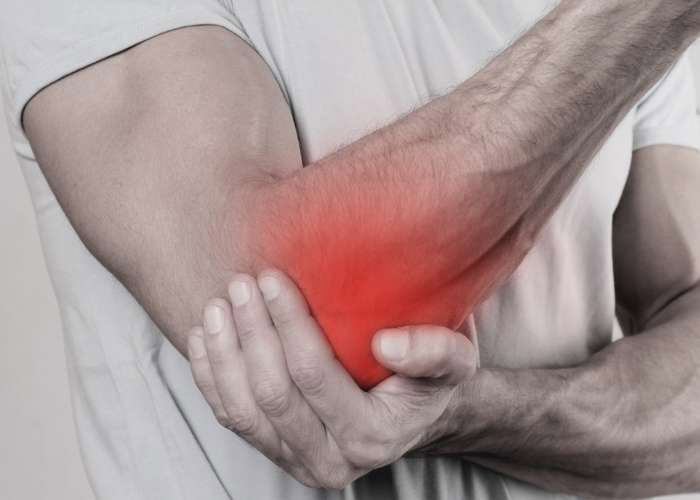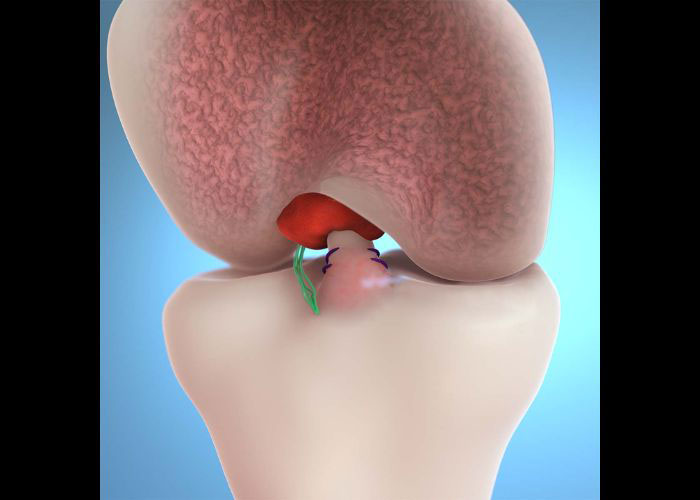What is ulnar nerve entrapment?
The ulnar nerve, one of three main nerves that travel the upper arm, carries sensory and motor information to and from the ring and pinky fingers of the hand. The ulnar nerve also controls the muscles of the forearm that allow a strong grip and the muscles of the hand that perform fine motor movements. This nerve passes through the cubital tunnel at the base of the distal humerus (upper arm bone). Because this bone tunnel is narrow, the ulnar nerve can become compressed resulting in pain, tingling, and numbness of the forearm into the fingers. Ulnar nerve entrapment is commonly identified as the feeling after one hits their “funny bone”. The muscles of the forearm and hand can begin to atrophy when ulnar nerve entrapment is left untreated. Dr. Ronak Mukesh Patel, orthopedic elbow specialist serving patients in Sugar Land, Pearland, and the Houston, Texas area, has the knowledge and understanding, as well as substantial experience, in treating patients who have experienced ulnar nerve entrapment.

What is cubital tunnel syndrome?
The narrow cubital tunnel is formed by the medial epicondyle, a bony prominence of the distal humerus, and a rigid ligamentous sheath. Cubital tunnel syndrome is when the ulnar nerve is compressed as it passes through the cubital tunnel. Symptoms of pain, numbness, and tingling may worsen with bending and flexing of the elbow.
What are the symptoms of ulnar nerve entrapment?
Individuals with suspected ulnar nerve entrapment frequently experience the “shock-like” feeling after hitting one’s elbow. However, the symptoms reported typically occur with prolonged elbow bending instead of a force directly on the elbow. The majority of symptoms occur in the hand and not the elbow. Some common complaints of ulnar nerve entrapment include:
- Tingling and/or numbness of the fourth and fifth fingers
- “Falling asleep” feeling of the fourth and fifth fingers
- Difficulty with fine motor function to manipulate objects
- A weakened grip
- Trouble with finger coordination (i.e., playing an instrument, typing, etc.)
- Muscle atrophy, seen in severe cases
- Snapping on the inner elbow with ulnar nerve instability
How is ulnar nerve entrapment diagnosed?
Dr. Patel obtains an in-depth medical history to include any prior elbow injuries, underlying health conditions, current symptoms, medications, and job duties. A thorough physical examination of the affected extremity is then performed to evaluate any areas of pain, tenderness, or nerve compromise. If any of the tests performed are positive for nerve damage, diagnostic tools, such as electromyography (EMG) or nerve conduction studies, will be performed to pinpoint the location of nerve damage.
What is the treatment for ulnar nerve entrapment?
If ulnar nerve entrapment is suspected, it is important to consult an orthopedic elbow specialist as soon as possible to prevent irreversible muscle atrophy.
Non-surgical treatment:
Patients with confirmed ulnar nerve entrapment that does not interfere with the ability to perform activities of daily living may benefit from treatment with conservative therapies alone. A padded splint or brace may be applied to keep the elbow straight while sleeping. Non-steroidal anti-inflammatory medications (NSAIDs) can reduce any swelling that may surround the ulnar nerve. Dr. Patel may recommend nerve-gliding exercises to prevent wrist and forearm stiffness.
Surgical treatment:
Surgical intervention may be required for patients with severe ulnar nerve compression, muscle atrophy, or conservative treatments failed to alleviate symptoms. Dr. Patel can perform one of two surgical techniques to correct ulnar nerve entrapment. Cubital tunnel release increases the size of the cubital tunnel by cutting and dividing the ligamentous sheath to relieve pressure on the nerve. Ulnar nerve transposition relocates the ulnar nerve from behind the medial epicondyle to in front of the elbow to relieve tension and improve nerve stability and secures the nerve either underneath the muscle, within the muscle, or on top of the muscle. Dr. Patel will review the patient’s age, current symptoms, work and leisure activities, and desired recovery goals to determine which surgical method is appropriate.
Ulnar Nerve Entrapment Specialist

Are you experiencing numbness and tingling in your pinky and ring finger along with pain or the sensation that you have hit your “funny bone” in your elbow? If so, you may have ulnar nerve entrapment or cubital tunnel syndrome. Both of these can cause similar symptoms and should be treated by an elbow expert. Ulnar nerve entrapment specialist, Doctor Ronak Mukesh Patel, provides diagnosis as well as surgical and nonsurgical treatment options for patients in Houston, Sugar Land, and Pearland, TX who are experiencing the symptoms of ulnar nerve entrapment or cubital tunnel syndrome. Contact Dr. Patel’s team today!








